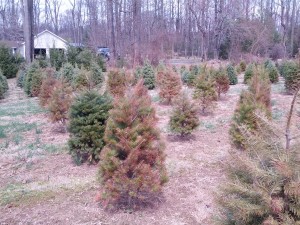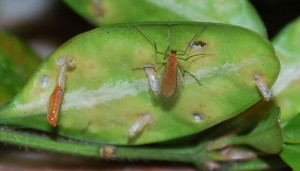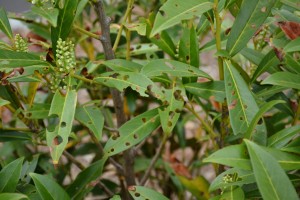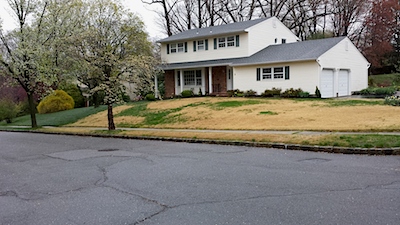Buds of many confiers, including Douglas-fir, are in the process of breaking around the state. Every spring around this time, the Plant Diagnostic Laboratory starts to get samples with suspect needlecast, and as usual, we have indeed seen our share of needlecast so far this spring.
Landscape, Ornamentals, Nursery, and Turf Edition
Seasonal updates on ornamental, nursery, and turf pests.
Subscriptions are available via EMAIL and RSS.
Companion Website Links:
 Rutgers Turf Blog - Articles on turfgrass diseases and cultural practices for the commercial turfgrass industry. Subscription available via RSS.
Rutgers Turf Blog - Articles on turfgrass diseases and cultural practices for the commercial turfgrass industry. Subscription available via RSS.
 Rutgers Weather Forecasting - Meteorological Information important to commercial agriculture.
Rutgers Weather Forecasting - Meteorological Information important to commercial agriculture.
Fly, Boxwood Leafminers Fly!
If you haven’t noticed, spring has sprung in earnest. Spring flowering trees and shrubs have popped and are already fading. The buds of many other plants are breaking everywhere. Right along with the plants come the critters.
Pesticide Worker Protection Inspection Warning
The New Jersey Department of Environmental Protection Pesticide Control Program (NJDEP) has announced that federal agricultural Worker Protection Standard (WPS) compliance farm inspections will be conducted mid-May through July. Be a prepared agricultural employer. Take the necessary actions this week to make sure your farm is in compliance to avoid citations.
Two outstanding farm employer resources on agricultural WPS compliance are:
1. EPA Ag Employer Quick Reference Guide (2005)
2. EPA website How to Comply with the Worker Protection Standard for Agricultural Pesticides: What Employers Need to Know
These are inspections by the US EPA, although NJDEP inspectors may accompany them. Approximately 20 to 30 inspections are slated to be conducted any time from May through July.
Why are There Holes in My Cheese?
Do you ever wonder what is causing your cherrylaurel to look like Swiss cheese? Clearly, it’s not because Anatole has been hanging around. More than likely the shothole symptoms you see are caused by one of several pathogens and abiotic stresses common to other species of Prunus.
Turf Green-up Update
Most landscape lawns, sports turfs, and golf course surfaces should have reached full green-up but there will be some exceptions. The major exception to this is zoysiagrass turf.
Zoysiagrass will not begin green-up until mid- to late-May. Although not as slow to green-up as zoysiagrass, fine fescue will be slower than perennial ryegrass and tall fescue. Many of the Kentucky bluegrass varieties that are commonly used for sod production will be slow to green-up in the spring.
[Read more…]Brown Ring Patch Spotted in New Jersey
Brown Ring Patch (aka Waitea patch) is starting to show up on golf course putting greens at this time.
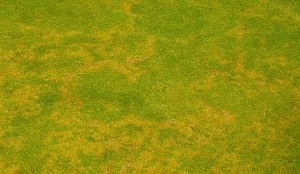
Brown Ring Patch on a Golf Green
Photo: S.McDonald
